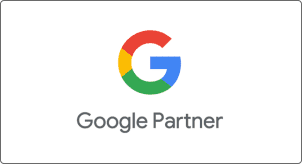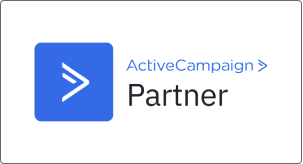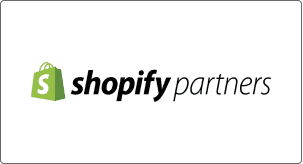Is your lead generation process feeling more like a grind than a growth engine? You’re not alone. Many businesses struggle with inconsistent lead flow, time-consuming manual follow-ups, and the frustration of missed opportunities. But there’s a smarter way forward, one that’s already transforming how Australian businesses attract and convert leads.
Enter marketing automation.
Marketing automation isn’t just another tech buzzword. It’s a powerful tool that streamlines and scales your lead generation efforts. It helps you connect with the right people, at the right time, with the right message, automatically.
In this article, we’ll explore:
- What marketing automation really is (and isn’t)
- How it sharpens your lead acquisition and nurturing
- Strategies that deliver measurable results
- Success stories from Australian businesses
- How to choose the right platform for your needs
- Common pitfalls and how to avoid them
Whether you’re just starting out or looking to optimise your current setup, this guide will help you take confident, strategic steps toward smarter, more effective lead generation.
What Exactly Is Marketing Automation (And Why Should You Care)?
At its core, marketing automation uses software to streamline marketing activities across channels: think email, social media, SMS, and beyond. It takes care of repetitive tasks, empowers you to nurture leads more effectively, and allows for tailored customer experiences at scale.
Done right, marketing automation is brilliant at bridging that often tricky gap between getting leads in the door and actually turning them into paying customers. It’s a gap that, let’s be honest, can leak a lot of potential revenue.
And the results aren’t just theoretical. Businesses using marketing automation report up to a 451% jump in qualified leads. That’s a serious kickstart and really shows how transformative automation can be when you put it to work strategically.
What really sets marketing automation apart is its ability to run lead generation strategies at a scale and with a precision that you just can’t match manually.
Plus, the way marketing automation is designed, handling things across multiple channels, it pushes businesses to take a broader view of the whole customer journey. It gets you thinking beyond those one-off interactions and towards a more joined-up and strategic approach to your campaigns.
How Marketing Automation Powers Up Lead Capture and Nurturing
Marketing automation is way more than just a fancy email sender; it’s a well-oiled system designed to handle a lead’s entire journey, from that first hello to when they’re ready to buy, and even beyond.
It works by combining several powerful, interlinked tools. Each one is designed to remove friction, sharpen focus, and deliver the right message at just the right time. Let’s break it down:
Smart Segmentation:
Forget blanket messaging. With marketing automation, you can segment your audience based on behaviour, demographics, interests, or engagement history. Whether it’s someone who downloaded an advanced SEO guide or a first-time visitor browsing your pricing page, you can tailor your messaging to match their intent and stage in the journey.
This kind of precision targeting boosts engagement and conversion rates. Because when people feel understood, they’re more likely to act.
Automated Lead Scoring:
Not every lead is ready to talk to sales, and that’s okay! Lead scoring helps you identify which prospects are hot and which ones need more nurturing. It’s a system that gives points to leads based on both what they tell you (e.g. industry or job title) and what they do (i.e. visiting your pricing page or downloading content).
This means your sales team spends less time chasing cold leads and more time closing warm ones. In fact, marketing automation can contribute to a 14.5% increase in sales productivity, partly thanks to better lead qualification.
Personalised Nurturing Workflows:
Once a lead is in your system, automation keeps the relationship alive. These are automated sequences of communications – usually emails, but sometimes including targeted content or SMS messages – that are triggered by what a lead does, their details, or pre-set timings.
These workflows are triggered by real-time behaviours, ensuring your messages are timely, relevant, and helpful. A classic example is a welcome email series for new subscribers, which might then branch off into different content depending on what links they click in those initial emails.
Dynamic Content & Messaging:
Dynamic content is where things really get fun (and powerful). It’s the secret sauce that lets your emails, landing pages, and web content shape-shift based on who’s looking.
Say hello to hyper-personalisation. Your lead’s job title, location, past clicks, and content history can all determine what they see, automatically. Personalised content gets higher open rates, stronger engagement, and a smoother path to conversion. Plus, it makes your leads feel understood. And let’s be honest, that’s half the battle.
Proven Marketing Automation Strategies for Lead Generation
It’s one thing to understand what marketing automation is, it’s another to actually weave it into your day-to-day operations in a way that delivers real results. Here are some key strategies to consider:
- Email Sequences That Nurture and Convert
Forget one-off email blasts. Automated email sequences, also known as drip campaigns, are designed to guide leads through their journey with timely, relevant content. Whether it’s a welcome series for new subscribers, follow-ups after a webinar, or re-engagement emails for dormant leads, these sequences keep your brand front-of-mind.
The key? Focus on value. Each email should educate, inspire, or solve a problem. When done right, automated emails can generate 320% more revenue than non-automated ones. And in Australia, where email marketing is the largest segment of the automation market, this strategy is a must-have.
- Landing Pages That Work While You Sleep
Marketing automation platforms often include tools to build high-converting landing pages and forms. These aren’t just static pages since they’re smart, integrated, and responsive. When a lead fills out a form, their data flows straight into your CRM and can trigger a tailored follow-up sequence instantly.
Some platforms even support dynamic landing pages, which adapt content based on who’s visiting. That means more relevance, more engagement, and more conversions… without lifting a finger.
- Social Media Automation (Used Wisely)
Social media is a powerful lead generation tool, but it’s also a time sink. Automation can help you schedule posts, monitor engagement, and even capture leads directly from platforms like Facebook and LinkedIn.
But here’s the catch: don’t overdo it. Social media is about connection. Use automation to stay consistent and responsive, but always leave room for real, human interaction. Done right, it can help you scale your presence without losing authenticity.
- AI Chatbots That Qualify Leads in Real Time
AI-powered chatbots are like having a 24/7 sales assistant on your website. They can answer common questions, guide visitors to the right content, and even qualify leads based on budget, needs, or timeline.
This instant engagement is crucial, especially when a prospect is ready to act. A well-configured chatbot can capture interest at its peak and hand off hot leads to your sales team without delay.
Strategy First, Tactics Second
You can have the fanciest email sequence and flashiest chatbot in the world, but without a clear strategy, it’s like throwing darts blindfolded.
To really make automation sing, you need:
- A clearly defined Ideal Customer Profile (ICP)
- A mapped-out customer journey
- A content plan that aligns with both
Only then should you layer on automation. Think of it like building a house: strategy is your blueprint. Automation is the power tools.
And in the Aussie market? Email remains king as it is the largest segment in local marketing automation, by a mile. So mastering these strategies isn’t just smart, it’s essential.
How to Choose the Right Automation Tool
Look for platforms that offer:
- Easy-to-use interfaces
- Strong CRM integrations
- Scalability as your needs grow
- Robust reporting and analytics
- Multichannel capabilities (email, SMS, social, web)
- Lead generation features like scoring, nurturing, and dynamic content
Popular options in Australia include HubSpot, Salesforce, Zoho, Marketo, Omnisend, and Klaviyo. Trial them, compare features, and focus on what aligns best with your strategy.
Navigating the Roadblocks
Common pitfalls include:
- Jumping in without a strategy → Start with clear goals and map your customer journey.
- Poor data quality → Keep your data clean and integrations tight.
- Over-automation → Use tech to enable human connections, not replace them.
- Skill gaps → Invest in training and upskilling.
- Sales–marketing misalignment → Build shared goals and transparent processes.
Remember: automation is an enabler, not a silver bullet. Combine it with smart strategy and a human touch, and you’re in business.
Final Thought: Strategy First, Tech Second
Marketing automation works best when it’s invisible. Not flashy. Not replacing anyone. Just quietly making everything more efficient behind the scenes, so your team shines out front.
Real success comes when this automation is driven by a solid strategy, informed by deep customer insights, and implemented with a human touch. It’s not about replacing your team, but about giving them the tools to excel in their roles.
For Australian businesses, the time to act is now. Start small by automating one or two key processes, then build from there. The future of lead generation is smart, personalised, and data-driven. And that future is ready when you are.
Need a hand getting there? 3 Phase Marketing specialises in strategy-led, data-driven lead generation that actually converts. Let’s make your marketing work harder, so you don’t have to. Contact us today to find out how we can supercharge your lead flow.
Frequently Asked Questions (FAQs)
- What is lead generation, and why is it important for Australian businesses?
Lead generation is the process of attracting and converting potential customers into interested prospects for your product or service. For Australian businesses, especially in competitive B2B markets, it’s essential to keep the sales pipeline full and healthy. With the right strategy, you can build consistent, high-quality leads that drive long-term growth. - How does marketing automation improve lead generation?
Marketing automation supercharges lead generation by streamlining repetitive tasks, enabling smarter segmentation, and delivering personalised experiences at scale. It ensures that every touchpoint, from website lead capture forms to email nurturing sequences, works efficiently and consistently to guide prospects through their buying journey. It’s especially powerful for B2B lead generation in Australia, where long sales cycles and complex decision-making require ongoing, tailored engagement. - Our business is B2B in Australia. How relevant is marketing automation for our lead generation efforts?
Marketing automation is highly relevant for B2B lead generation in Australia. It allows you to target specific business sectors, nurture leads with tailored content that addresses their unique challenges, and score leads based on their engagement to identify the most promising prospects for your sales team. By automating these processes, you can improve the quality of your B2B leads and make your sales efforts more efficient within the Australian market.
- We’re keen to improve our lead nurturing in Australia. How does marketing automation help with this?
Marketing automation is specifically designed to enhance lead nurturing in the Australian context. It allows you to create automated sequences of personalised communications (often emails) that are triggered by a lead’s actions or profile. This consistent engagement helps build relationships, educate potential customers about your offerings, and keep your brand top of mind until they are ready to make a purchase. Segmentation ensures your nurturing messages are relevant to different Aussie audiences, increasing their effectiveness.
- What’s the first step we should take if we’re looking to implement marketing automation for lead generation?
The very first step is to clearly define your goals and objectives for lead generation. What exactly do you want to achieve with marketing automation? Once you have a clear understanding of your goals, you can then map out your customer journey and start to identify the key areas where automation can have the biggest impact. This strategic thinking will guide your platform selection and implementation process. And if you’re ready to level up your results, 3PM is here to help.







